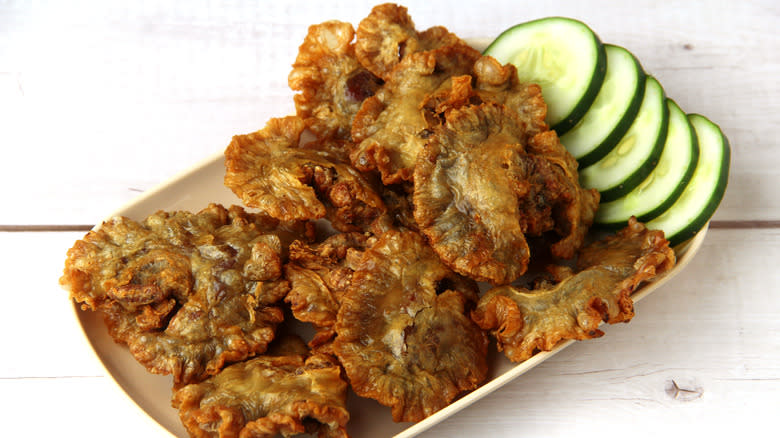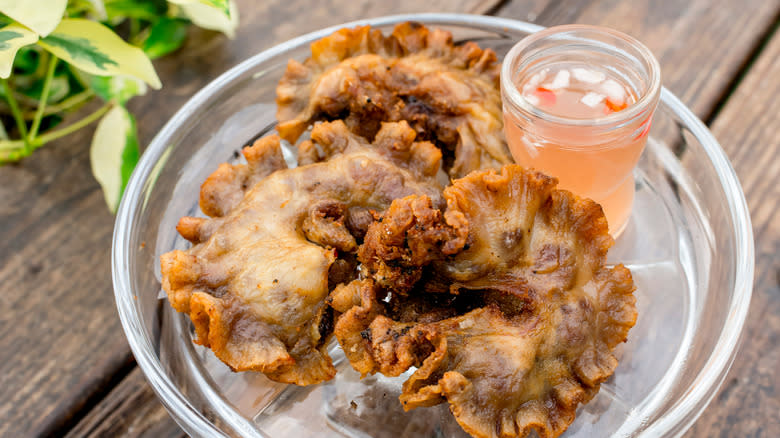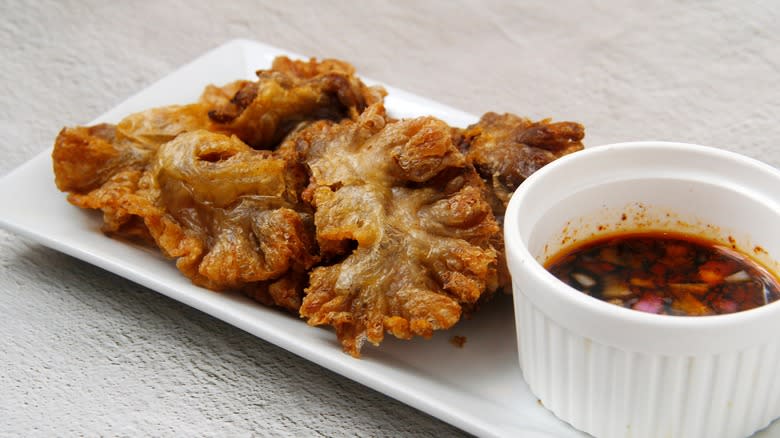Chicharon Bulaklak: The Crunchy Filipino Pork Snack You Have To Try

We may receive a commission on purchases made from links.
You have to admire any dish made creatively using ingredients others might throw away. Numerous cultures worldwide (including in the U.S.) use chicken or pig's feet in food. New Orleans cuisine has long been based on taking creatures the faint of heart might otherwise recoil from (like crawfish and alligators) and turning them into the most delicious meals you've ever tasted. And Icelandic hakarl, fermented shark buried in the ground for six months, definitely earns points for creativity.
There are a number of Filipino dishes equally as dedicated to creativity as avoiding waste. In this arena comes chicharon bulaklak, a fried pork snack made from a specific part of the pig. If you love pork and love fried foods, it's a match made in heaven. This savory snack is commonly served with spicy vinegar and often eaten as street food, a la street corn or hot dogs.
Read more: French Cooking Tricks You Need In Your Life
Chicharon Bulaklak Comes From Intestinal Lining

There's nothing particularly unusual about pig intestines; most cultures historically eat them, from the U.K. and China to Mexico, France, and the United States. Heck, traditionally, sausages (one of the most basic foods in many cuisines) have been cased in intestines. Where chicharon bulaklak becomes fascinating is not in its use of the intestine but of a specific aspect of it: The connective tissue that joins the pig's intestine to the abdominal wall. The name translates from Tagalog and means pork flower or flower cracklings, which is easy to see when you look at it, as it really does look like a deep-fried flower.
It requires a lot of cleaning, with multiple washes involving water, rock salt, and vinegar. That's not really out of the ordinary, though, because a lot of foods do; morel mushrooms are widely regarded as a delicacy, but if you eat one that hasn't been properly cleaned, you're going to get a mouthful of dirt. After cleaning, they're deep-fried low and slow -- they take a while, but the result is well worth it.
There's No Definitive Origin To Chicaron Bulaklak

We're not 100% sure about chicaron bulaklak's history; it's one of those foods that's just been around so long that people don't think about it that much. Chicharrón, or fried crackling pork intestines, originally came from Spain and were introduced to the Philippines during the Spanish colonization period of 1565-1898. So it's safe to say they were created at some point from the 16th century on (though we don't know precisely when). It's thought to have been created in the Ilocos province, but beyond that, there's no specific origin story.
What we do know is its cultural significance as both a street food and a general appetizer. Chicaron bulaklak is not an obscure dish in the Phillippines; it's the sort of comfort food of which every culture has some variety. It might be difficult to find in some areas, but if you have access to it, you won't regret giving it a try.
Read the original article on Daily Meal.

